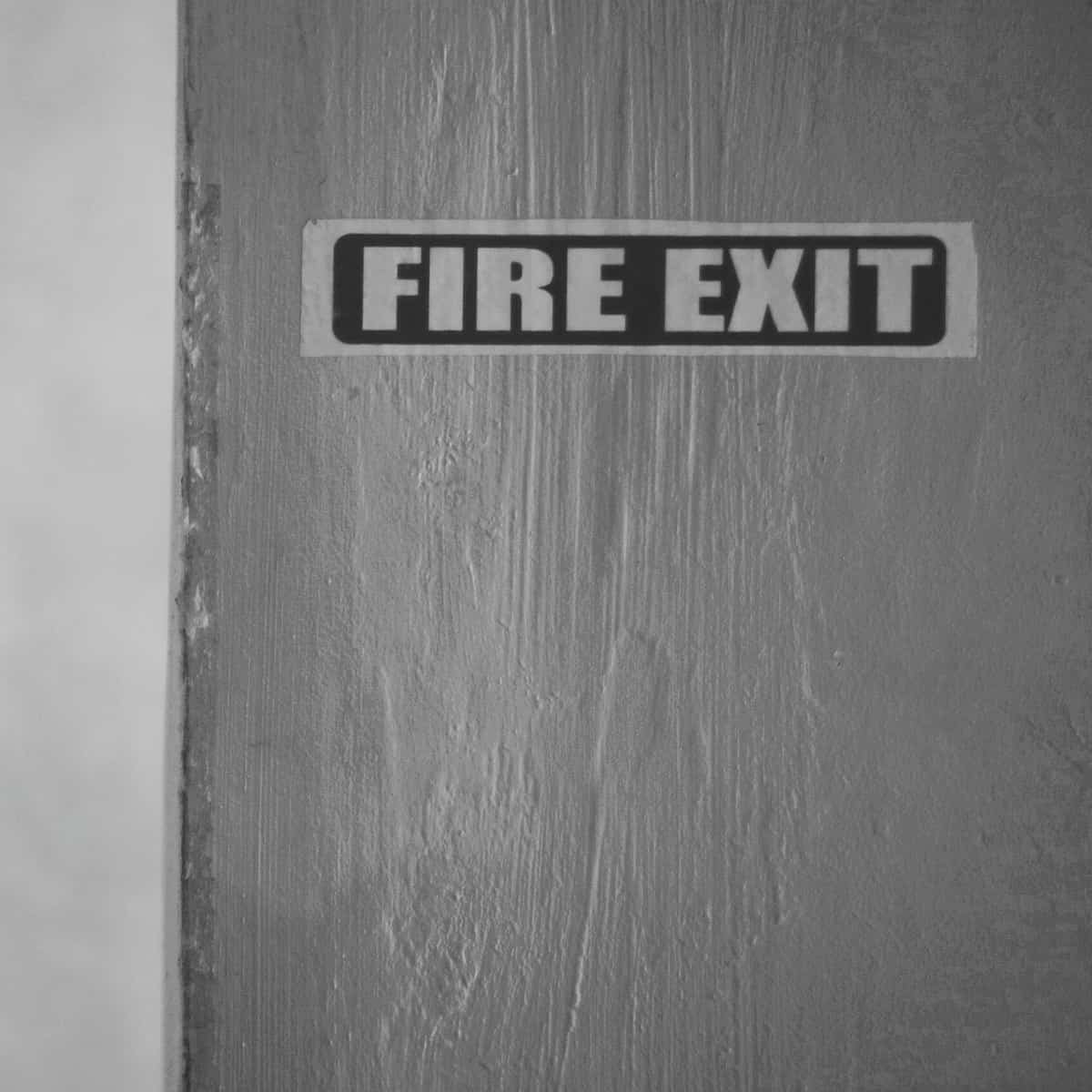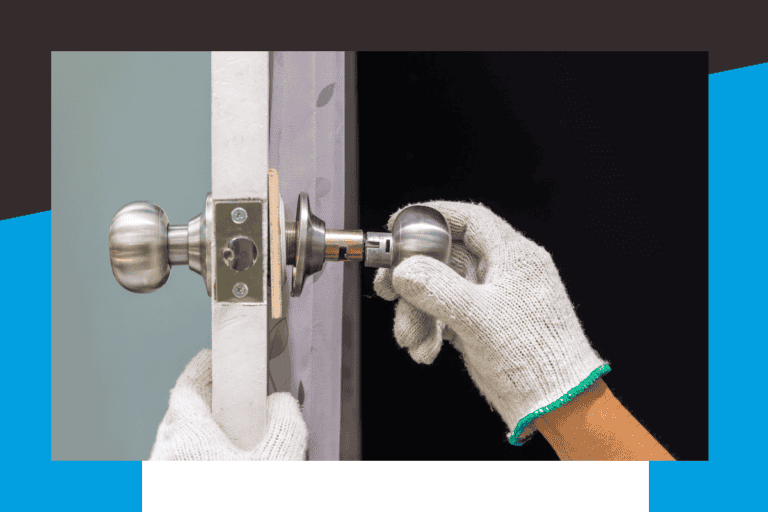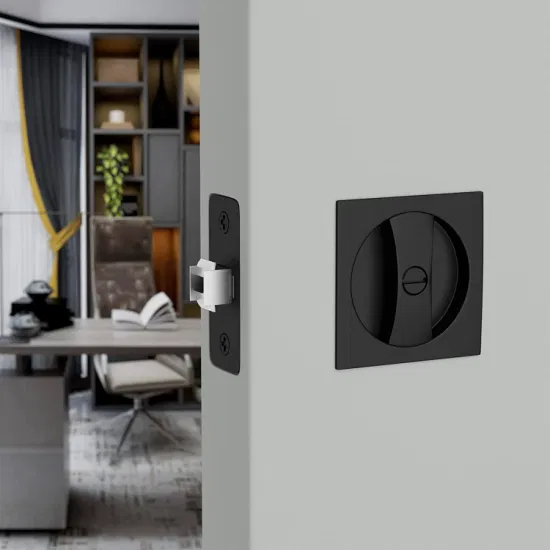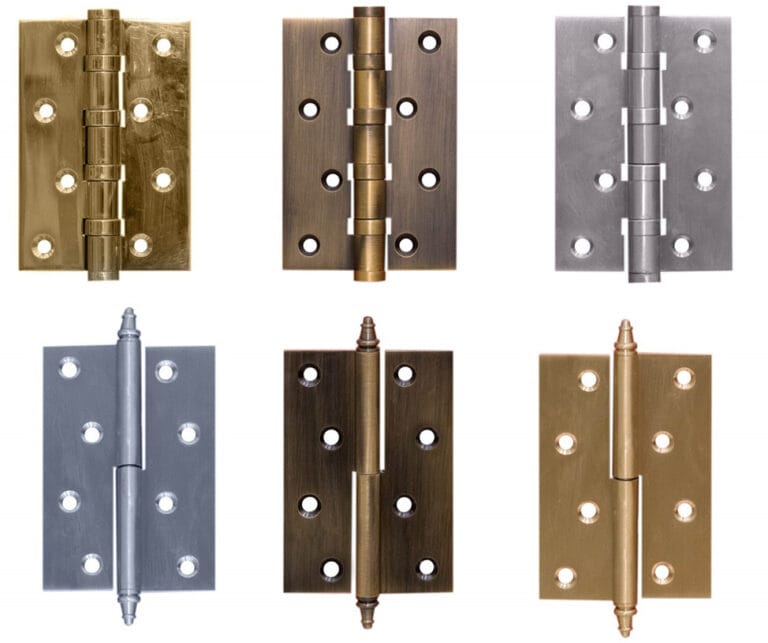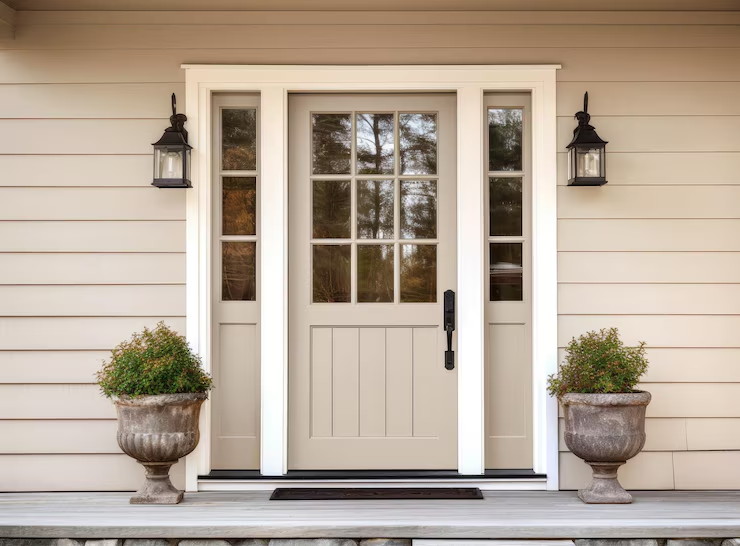Fire Rated Doors
Fire rated doors are an essential component of any building’s fire safety infrastructure. These doors are designed to protect the occupants and contents of a building in the event of a fire by limiting the spread of smoke and flames, while providing a safe path of egress. In this blog post, we will break down everything you need to know about fire rated doors – including material of fire doors such as steel and wood, door hardware requirements, maintenance, and inspection.
No matter which type of fire door is required for your property, it’s important that all buildings meet safety codes and regulations when it comes to installing them. Let’s dig into the basics of fire doors.
*The intent of this article is to provide general information regarding fire rated doors. For all code requirements and specifications regarding fire rated doors, make sure to contact your local building code compliance officer or other fire protection professional.
Table of Contents:
- Types of Fire Rated Doors
- Door Hardware Requirements
- Examples of Fire Rated Door Hardware
- Installation Tips for Fire Rated Doors
- Maintenance for Fire Rated Doors
- Conclusion
Types of Fire Rated Doors
Fire rated doors are an essential part of any building’s fire protection system. Fire rated doors come in a range of materials and styles to suit the fire safety requirements of both commercial and residential properties. Fire ratings indicate how long a door assembly will withstand fire exposure when tested according to national standards set by the National Fire Protection Association (NFPA).
Steel fire rated doors are designed to be highly resistant and durable against flames, smoke, and heat. They typically come in heavier gauges, such as 16,18, or 20 gauge steel and can be tested to a wide variety of fire resistance levels, from 20 minute to 180 minute. Additionally, steel fire doors are extremely strong and secure due to their material construction – making them ideal for high security applications such as hotels, office buildings or schools.
Fire rated wood door assemblies provide aesthetic appeal, but still incorporate a fire rated door core, such as mineral core. Fire rated wood doors are typically installed in hollow metal or steel frames. Fire rated wood frames are available, but cost more than steel . Standard wood door cores such as particleboard or composite lumber typically can carry a 20 minute fire rating without having to upgrade to a more expensive mineral core.
Typically fire rated doors can be sized as a single door of up to 4’0″ x 8’0″ or 8’0″ x 8’0″ for pairs. Some manufacturers may offer larger fire rated doors.
All fire rated door assemblies must meet stringent standards for performance during a standard test burn. These tests last up to three hours in length with temperatures reaching up to 1,700 degrees Fahrenheit in order to simulate real-world conditions. The results from these tests determine how long the assembly can withstand the heat before failing, which is then assigned as its “minute rating.” Standard minute ratings are 20, 45, 60, 90, and 180.
Fire rated doors are an important component of any building’s fire safety system, and understanding the different types available is key to making informed decisions. It is also essential to understand what minute rating is required for each opening where fire rated doors are required by code.
Door Hardware Requirements
Door hardware requirements are an important part of fire rated door assemblies. Fire rated doors must be equipped with UL latching hardware such as fire rated exit devices. Exit devices are required in certain egress points throughout a building. Variables such as occupancy is an indicator if an exit device is required. If exit devices are not required, standard mechanical locks that have been tested for fire ratings can also be used.
Fire rated doors typically must be self closing by the use of fire rated spring hinges or door closers to allow the door to close and latch automatically. Smoke seals are usually required to be installed around the frame and to impede smoke from permeating into the area. Fire-rated door hardware is designed to withstand high temperatures and resist flames for a certain period of time. In almost every circumstance, fire rated doors must close and latch without any assistance from an individual.
Examples of Fire Rated Door Hardware
UL Rated Spring Hinges

UL Fire Rated Locksets

Fire Rated Exit Devices

Door Closers

Smoke Seals

Installation Tips for Fire Rated Doors
Installing fire rated doors is a critical part of protecting your home or business from potential fires. Fire rated doors are designed to provide protection from the spread of flames and smoke, so it’s important that they are installed correctly. Here are some tips for ensuring your fire rated door installation goes smoothly:
Measurements:
Accurate measurements are essential when installing a fire-rated door. Make sure you measure twice and double check all measurements before ordering the door. The door should be sized so once it is installed there is no more than 1/8th inch gap between the frame and jamb on any side or at the top of the door. The maximum undercut of the door is 3/4.”
Hardware Selection:
Choosing appropriate hardware is key in order to ensure that your fire-rated door meets safety regulations set by UL 10C and NFPA standards. All locks, hinges, closers, latches must be tested and certified as compliant and indicated accordingly.
Upon installing the hardware, be mindful not to overtighten any screws during assembly process either since doing so could potentially cause damage to material components themselves leading to failure down the line at a later date. Both steel and wood doors should have proper reinforcements built into the door to ensure the doors are compatible for the hardware being installed on the door.
Maintenance Guidelines for Fire Rated Doors
It is important that all owners or operators of buildings containing fire rated doors perform regular maintenance on them in order to ensure they remain functional at all times – especially since failure during an emergency could have catastrophic consequences.
To ensure these doors continue to provide optimal protection against fires, it is important to maintain them properly. Here are some maintenance guidelines for fire rated doors:
Check the Door’s Integrity:
Inspect the door on a regular basis and check for signs of damage or deterioration such as cracks, warping, corrosion, or loose hardware. If any problems are found, repair or replace the door or hardware immediately. If you are unsure about the door’s compliance, reach out to a local fire door inspector for assistance. Click here for more information.
Hardware Maintenance:
Per each manufacturers maintenance recommendations, make sure that all hinges and other hardware are functional and operating correctly. If you believe they are not working correctly, consult each manufacturer for assistance in troubleshooting.
Replacing Smoke Seals:
Regularly inspect the smoke seals around the edges of your door periodically to make sure it is still in good condition and not cracked or worn out. Replace any damaged smoke seals with new replacements that meet codes for fire-rated doors. Test these seals regularly by closing the door completely then checking if there is visible light coming through from either side when viewed from an angle near its bottom edge. If you can see light coming through then replace those seals right away so they will be able to do their job effectively when needed most in case of an emergency situation like a house fire occurring suddenly without warning signs beforehand.
Conclusion
Fire rated doors provide an important layer of protection in the event of a fire. Adhering to all applicable regulations for selection, installation and maintenance of fire rated doors is essential in order to ensure safety from potential hazards posed by fires. By taking into account factors such as door hardware requirements, installation tips, and maintenance guidelines for fire rated doors, you can ensure that your property remains safe from potential hazards posed by fires. With proper selection and use of fire rated doors you can help keep yourself protected while also meeting any local codes or standards that may be in place.
Stay informed on the latest fire rated door trends, news and product information to ensure you are up-to-date with industry developments. Make sure your facility is compliant by investing in quality fire doors that meet safety standards. To learn more about wood doors, check out our Guide for Wood Doors.
